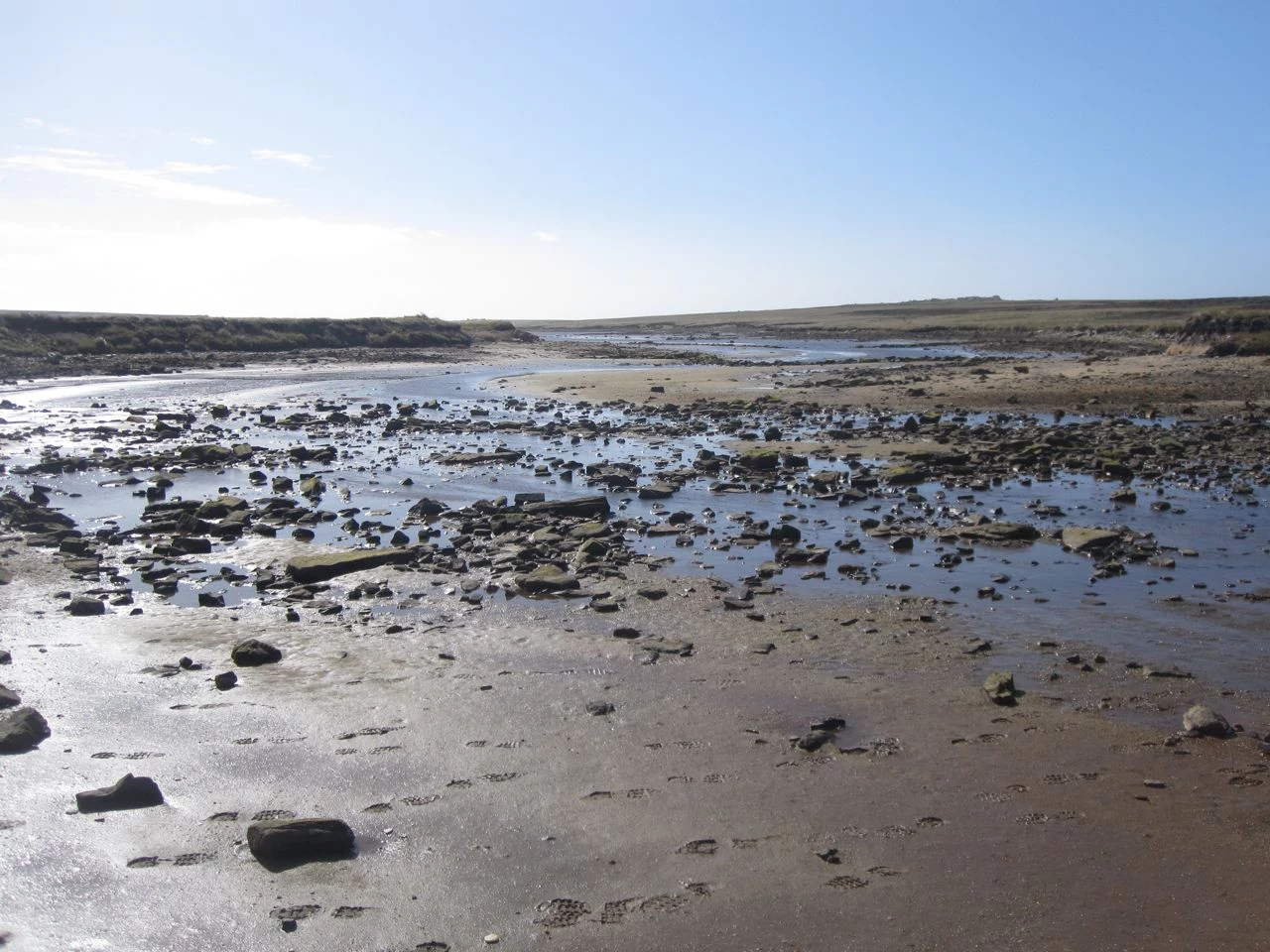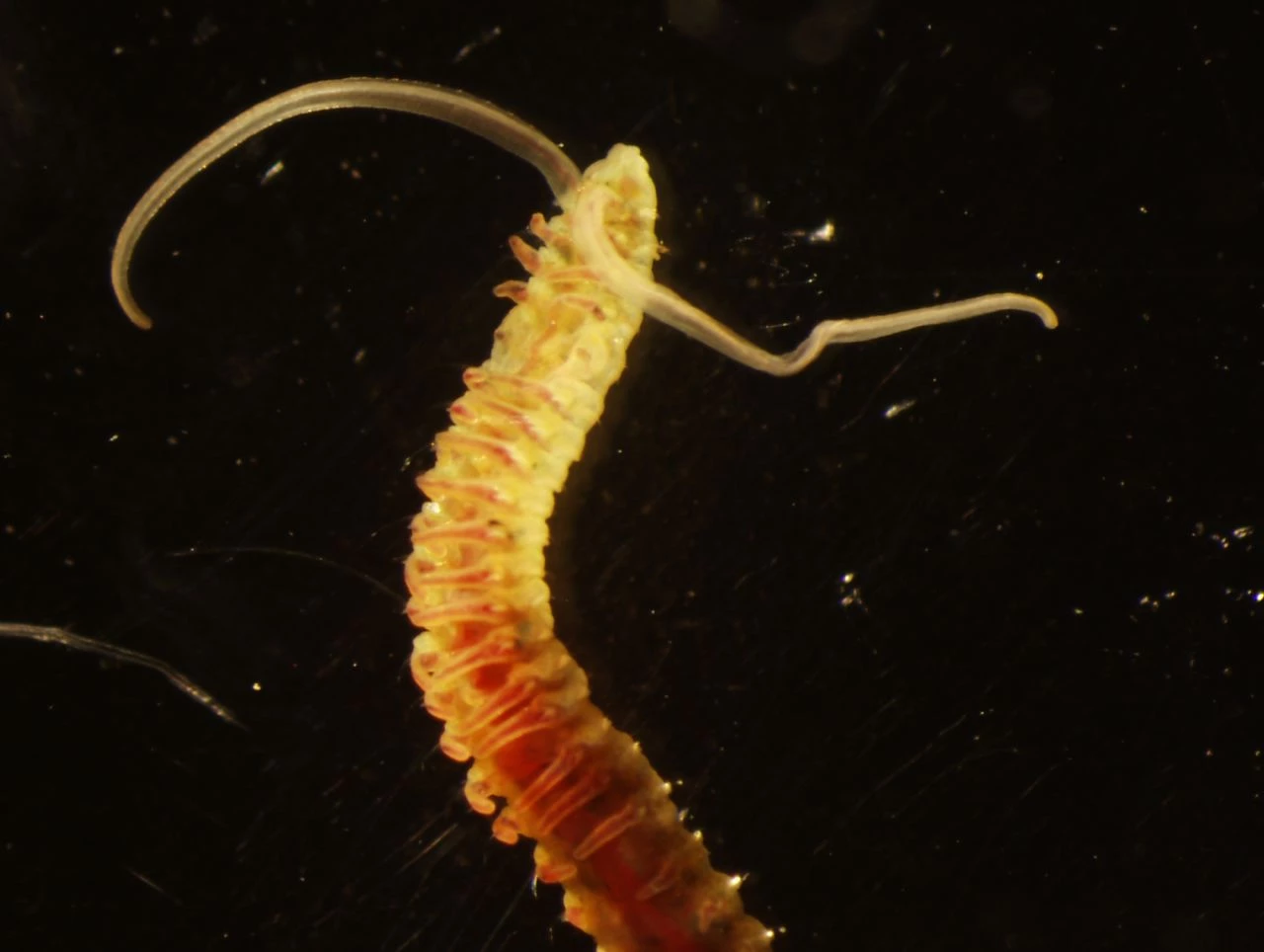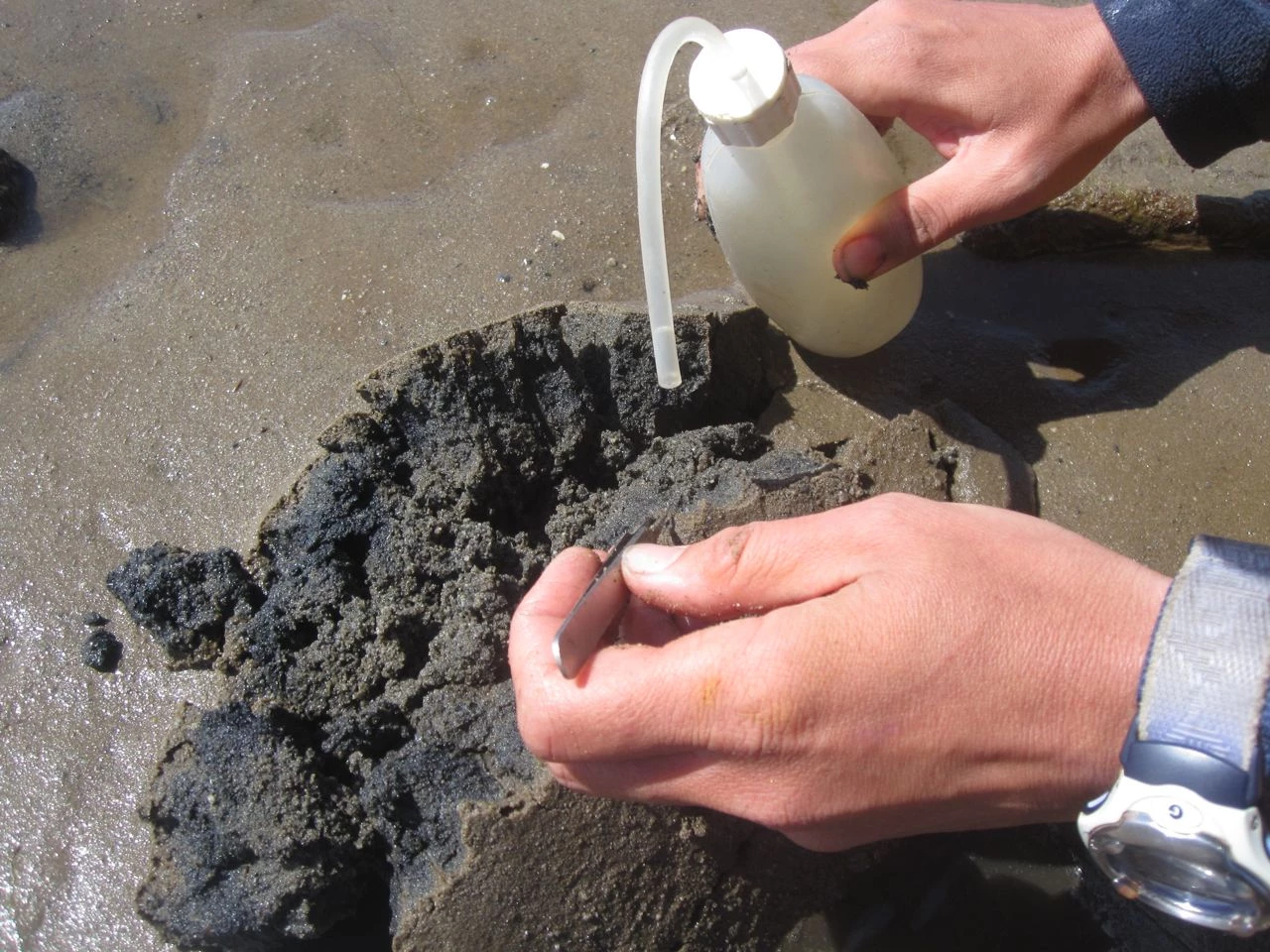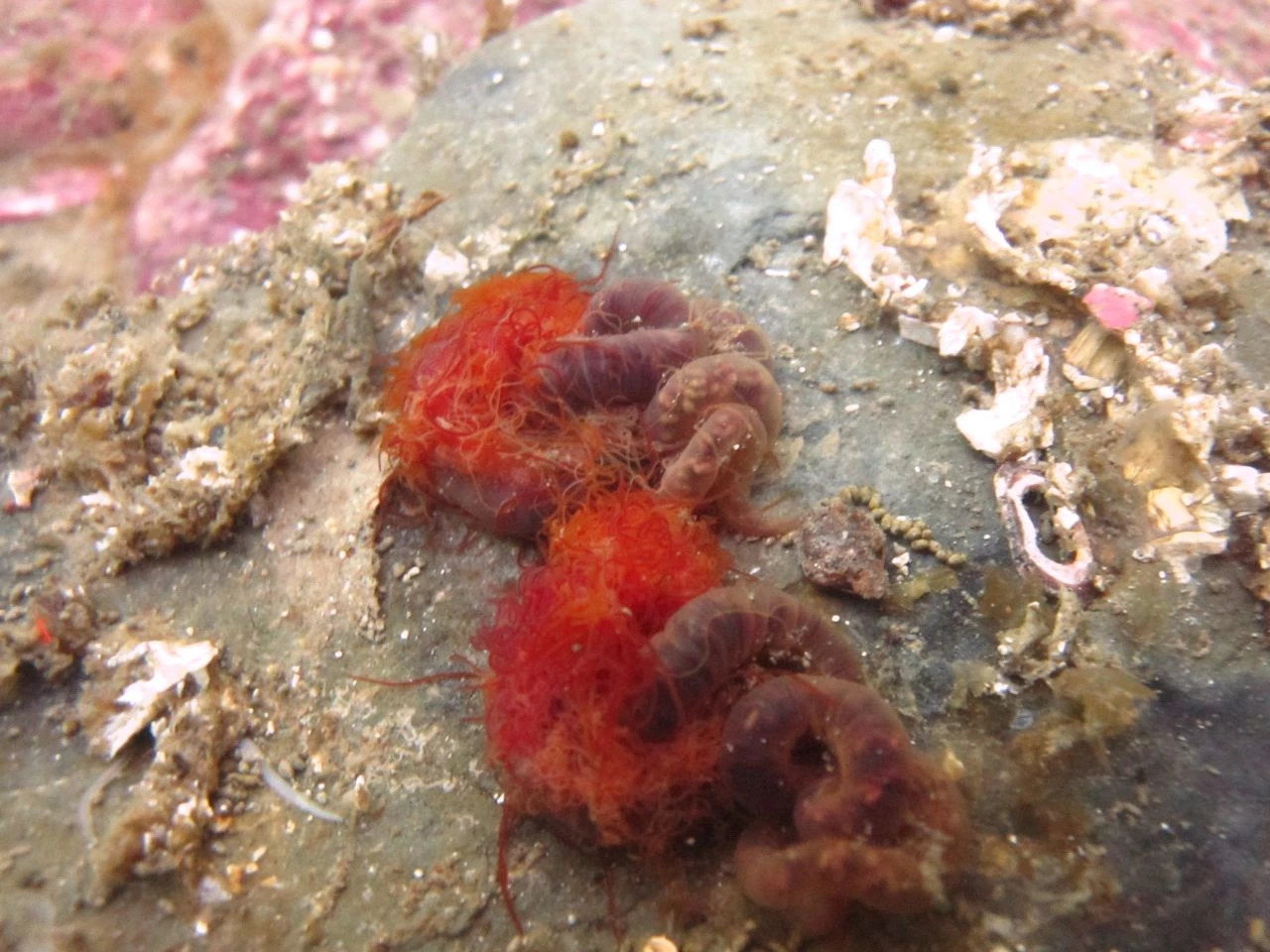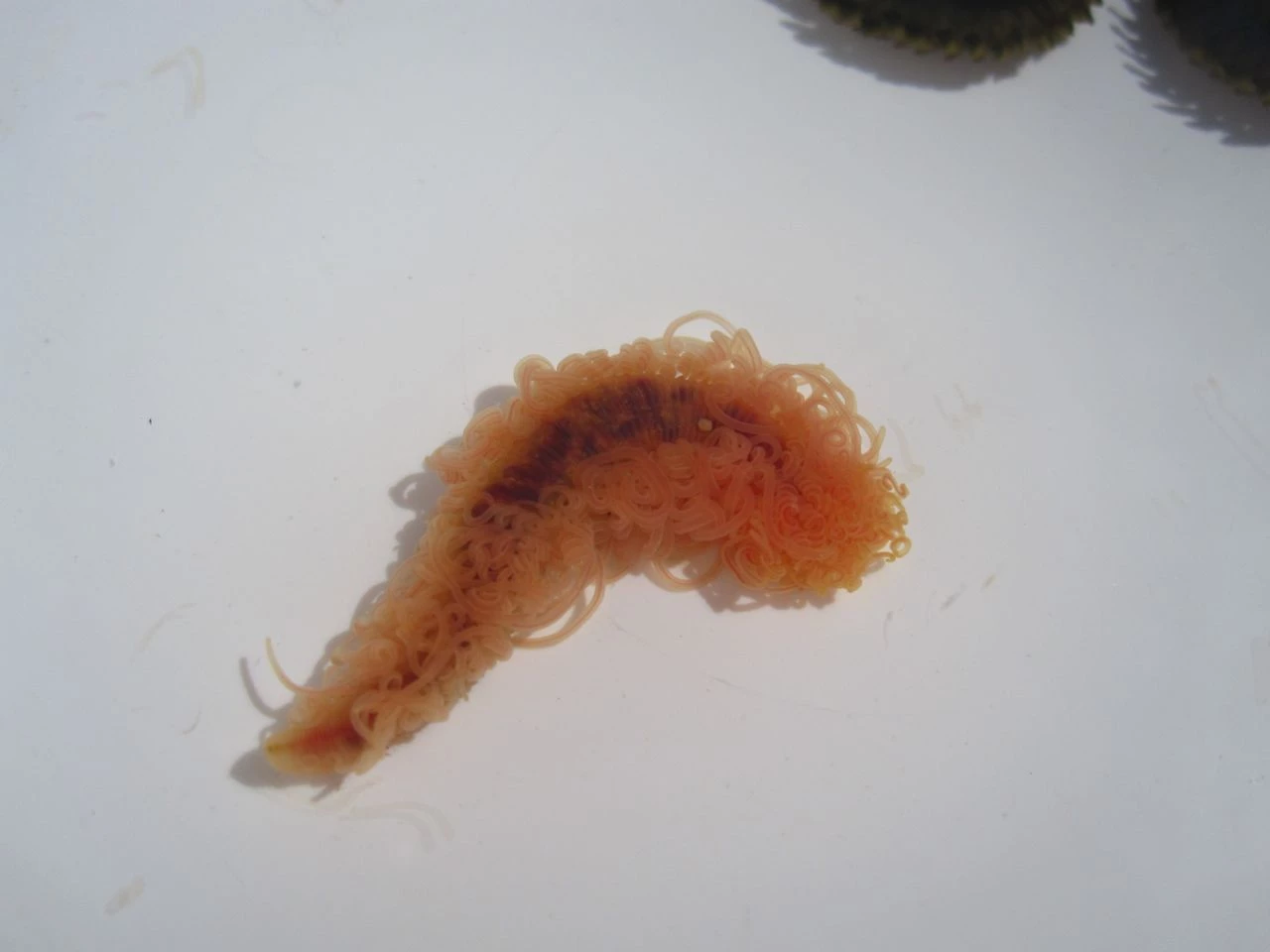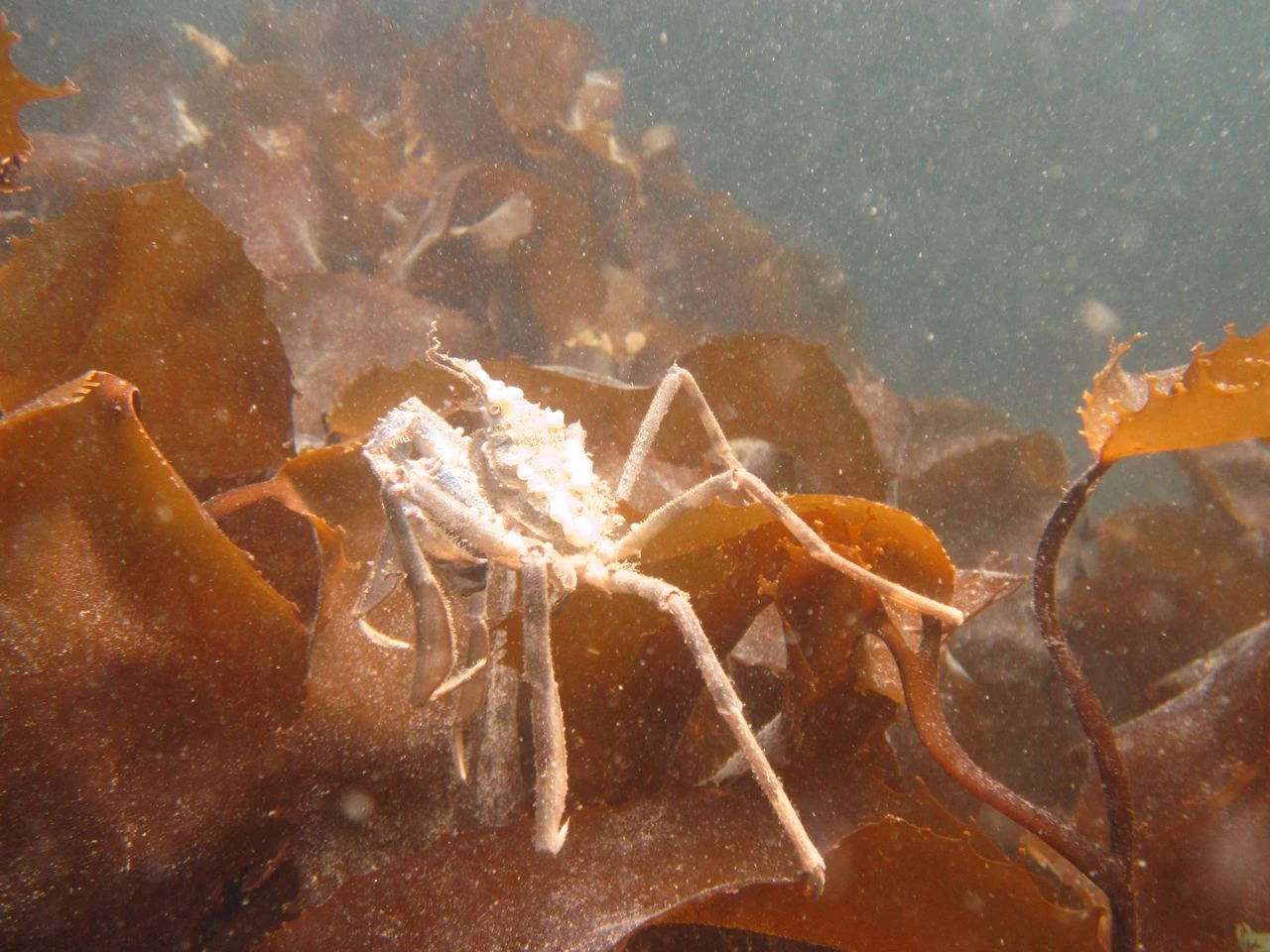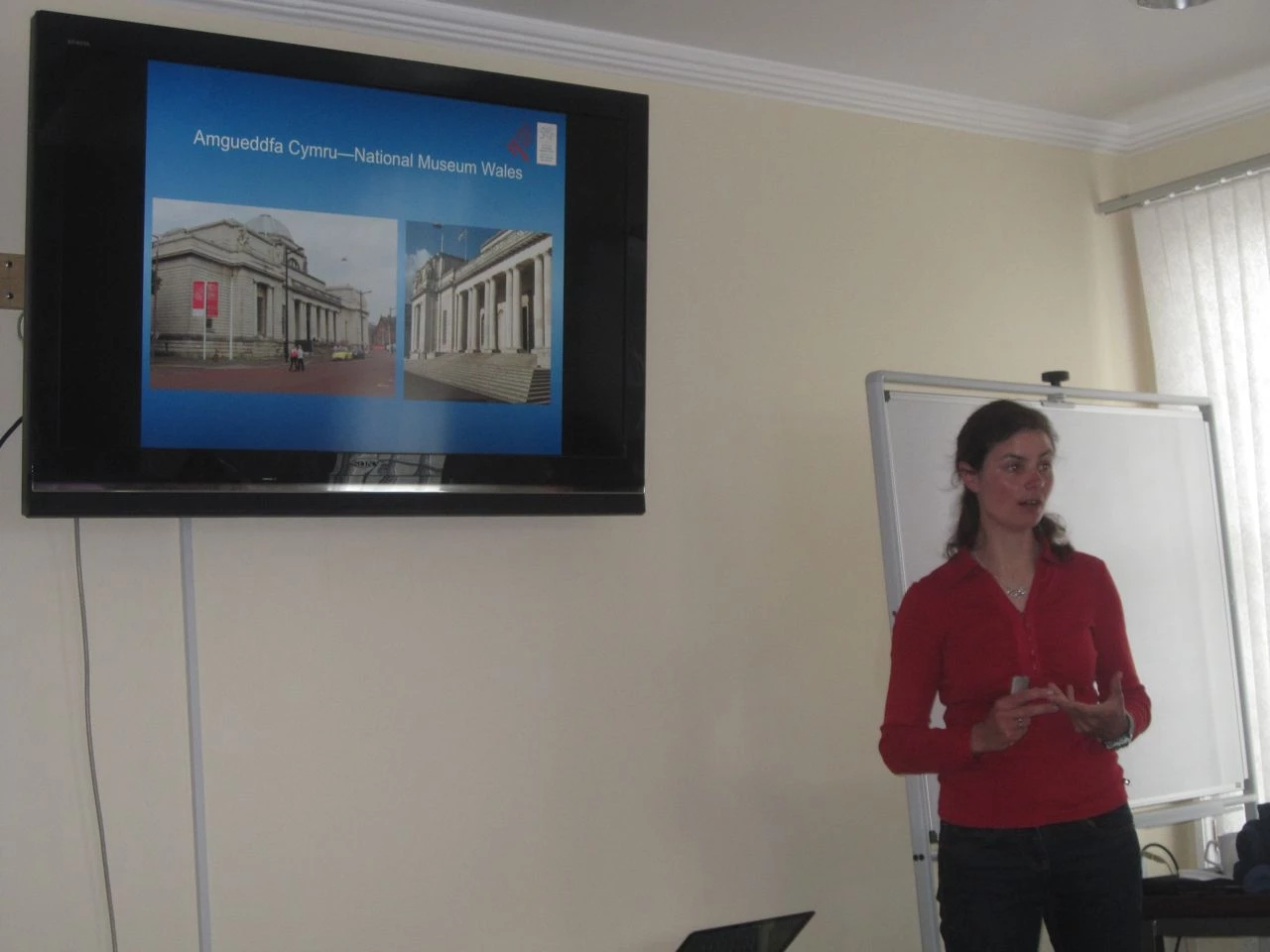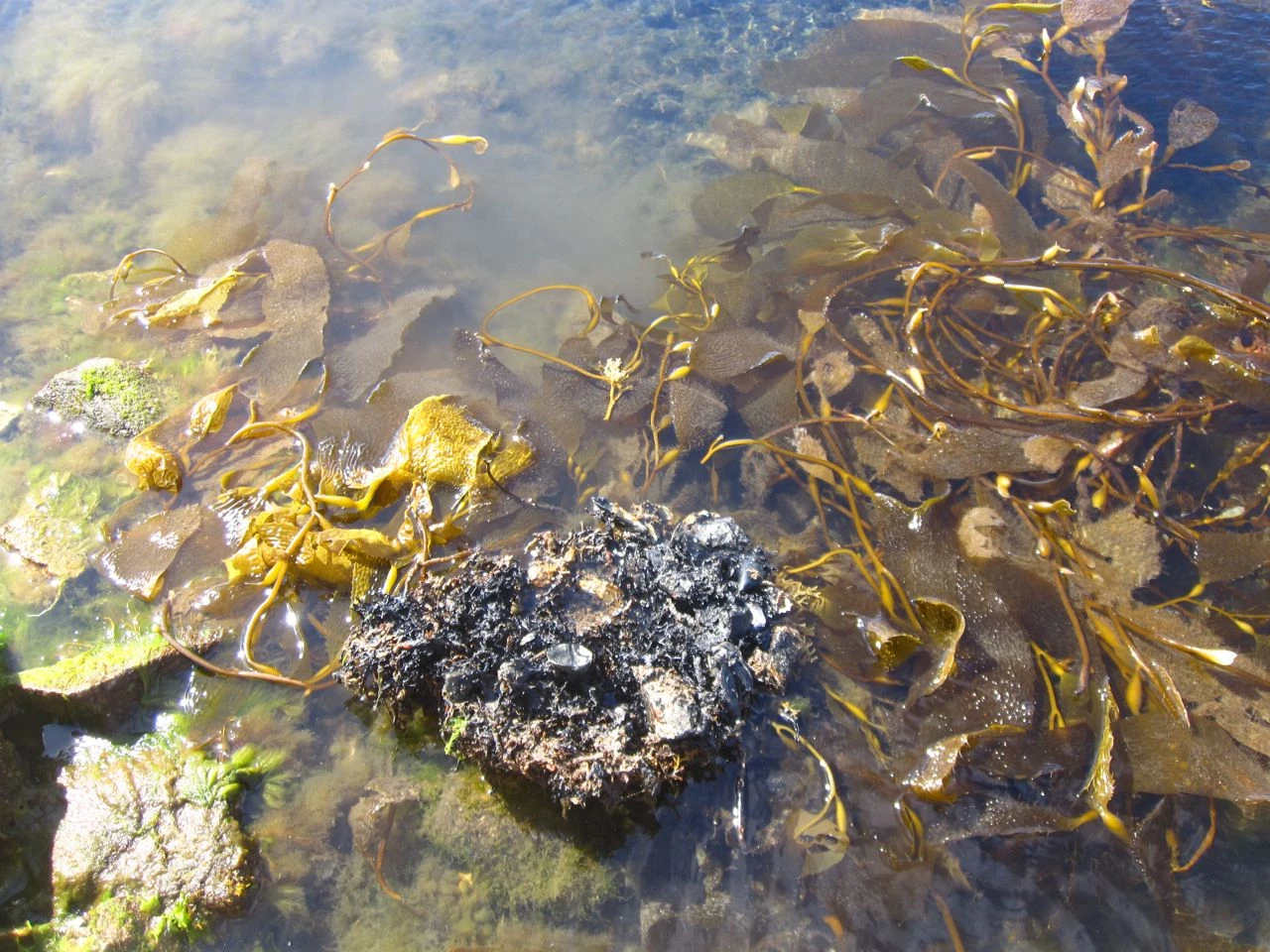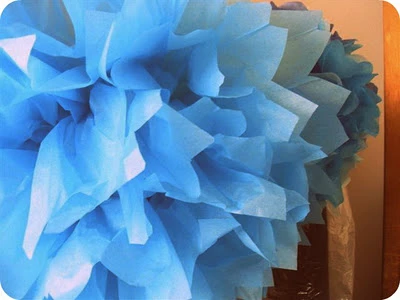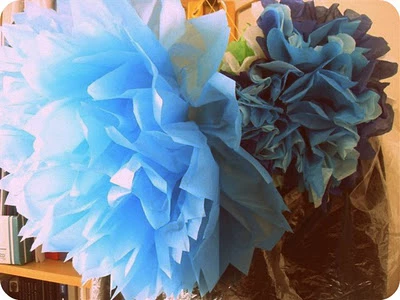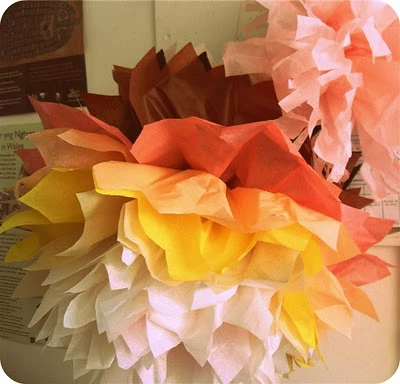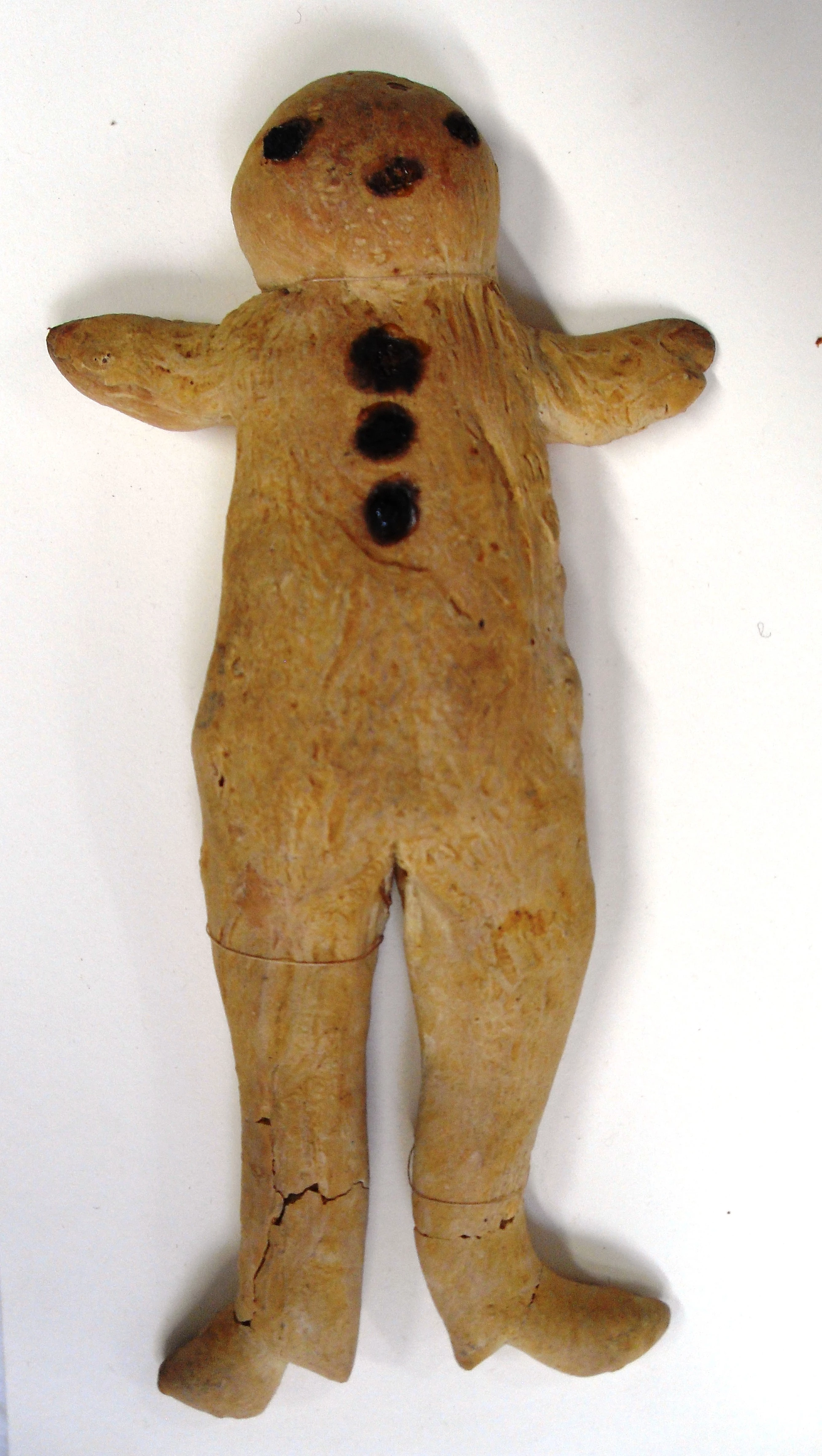Polychaete research in the Falklands by Teresa Darbyshire - day 24
, 8 Rhagfyr 2011
Back out to the shore this morning with Freya for company once again. We were only going a short distance outside of Stanley to an inlet called Mullet Creek (photo 1). This was a stream flowing down towards a sea inlet surrounded by coarse gravelly sand at the higher end, changing to a medium sand further down towards the sea. It was surprisingly less soft than I expected but still had a similar fauna to the site I sampled up at Mount Kent that had been much softer. It wasn’t quite as far down to the sea as it had been at Mount Kent, where I never even got close to finding where the sea had gone to).
I collected more of the Boccardia species (photo 2) that I thought might be different to the first one I had found which burrows into hard places such as the calcareous algae. These are very small and require a long time spent kneeling on the sand teasing them out of the surface layers (photo 3). There were also more paraonids, including more whole specimens, which is always good to find as opposed to small pieces!
The sea did still go out a long way as the inlet was very shallow. We were still heading down it when we came up to a fence that came part way out into the inlet. This was a minefield warning fence and so that was the end of our journey down the inlet. We still managed 6 separate sampling spots spaced out ranging from what would be ‘high shore’ to what was virtually ‘low shore’ so we didn’t do badly.
The sun didn’t come out for most of our sampling which kept it a little cool but also meant we were less likely to burn. It did come out as soon as we were finished though to warm us up.
A few hours back at the lab going through the samples and then a bit more formaldehyde to alcohol changing finished off the day.
The next couple of days will be quite busy. I’ll be sampling at Port Harriet tomorrow morning, a little further out from Stanley than I went today and then from there I’m heading west to Darwin for the night. Darwin is a couple of hours away on a narrow strip of land that connects the two sections of East Falkland, one northeast the other southwest, together. With sea on both sides but from completely different sides of the island, I’ll be able to sample two sites on Friday morning which have tides nearly two and a half hours apart. I’ll then head back to Stanley where I can sort the samples out in the evening. That will then be the last of the shore sampling!
